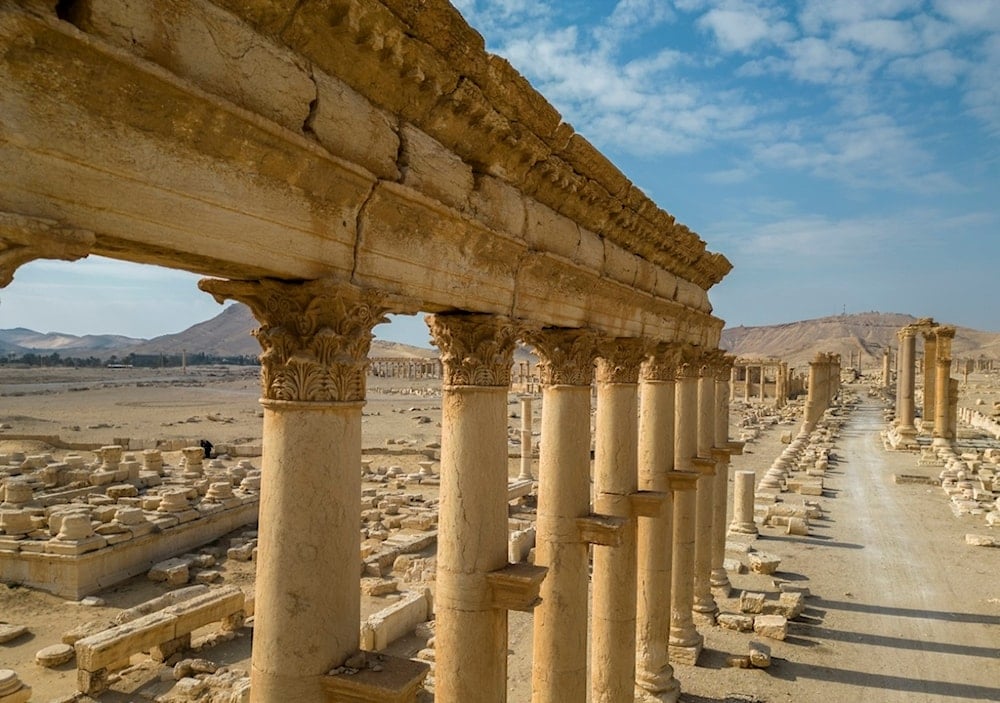Syria’s ancient sites looted as artifacts flood online markets
Looters target ancient Syrian sites like Palmyra as black market antiquities trade surges online, and experts warn that Facebook is enabling the trafficking surge.
-

An aerial view shows sections of the columns in the ancient city of Palmyra, Syria, Saturday, January 25, 2025. (AP)
Syria’s archaeological heritage is under mounting threat as looters descend on ancient sites like Palmyra, digging for artifacts that are quickly trafficked and sold online. A recent report by The Guardian reveals that antiquities theft has surged dramatically since the December collapse of the Assad regime, with online sales accelerating through platforms like Facebook.
Palmyra, which had already been subjected to destruction in 2015 at the hands of ISIS, is now being ravaged again, this time by opportunistic grave robbers and organized networks. Armed with tools, looters target 2,000-year-old crypts, leaving behind craters and shattered remains. “Once the archaeological layers are disturbed, it becomes impossible to reconstruct the past,” said Mohammed al-Fares, a local activist and member of Heritage for Peace.
According to the Antiquities Trafficking and Heritage Anthropology Research Project (ATHAR), more than 30% of the 1,500 documented Syrian antiquities cases since 2012 have occurred in just the last few months. The group says this is the largest and fastest wave of trafficking they’ve recorded from any country to date.
Western demand driving artifact theft
ATHAR co-director Katie Paul highlighted the role of social media, especially Facebook, in facilitating these illicit transactions. Despite Facebook’s 2020 ban on antiquities trading, Paul says the platform still hosts dozens of active groups selling ancient coins, mosaics, and statues, many operating in public view. In one case, a seller livestreamed from an excavation site, asking viewers for digging advice.
“This is the fastest we’ve ever seen artifacts move,” Paul noted. “What used to take a year now takes just two weeks.”
Many looters are ordinary Syrians driven by poverty, but others are part of criminal operations using heavy machinery to excavate entire sites. Videos from areas like Tall Shaykh Ali show rows of deep, uniform pits, which are evidence of professional digging. Once removed, antiquities are smuggled to neighboring countries such as Jordan and Turkey, then laundered with fake paperwork before entering Western auction houses and museums.
Syria’s interim government has responded with limited tools, threatening looters with prison time and offering rewards for turning in artifacts, though enforcement remains weak. With 90% of the population living in poverty and the country still recovering from 15 years of war, authorities face immense challenges in protecting cultural sites.
Experts like Paul and ATHAR co-founder Amr al-Azm argue that the ultimate solution lies outside Syria. “We focus too much on the supply side,” Azm said. “If there were no demand in the West, there would be far less incentive to destroy Syria’s heritage.”

 3 Min Read
3 Min Read








